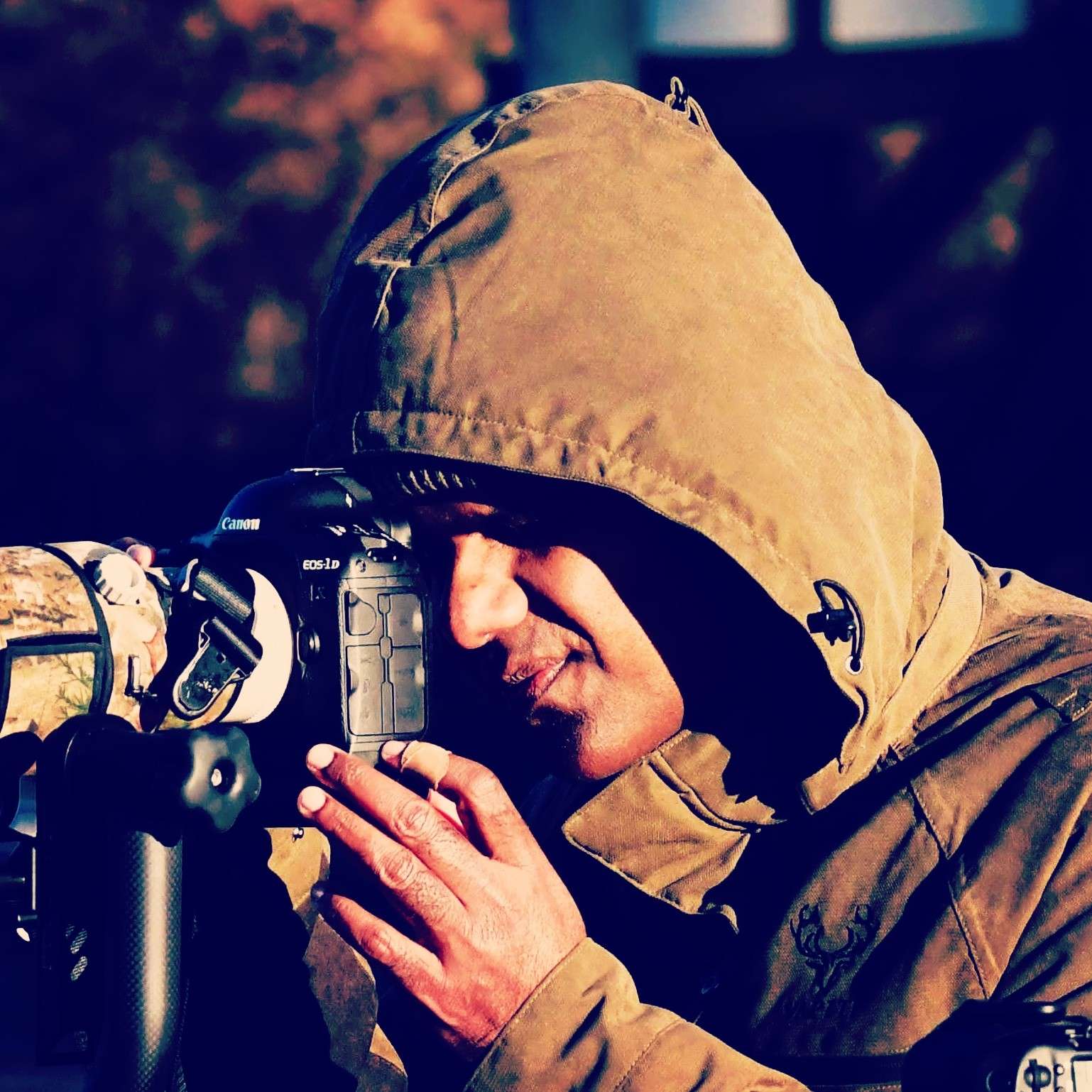I was first inspired to see the Capercaillie when I saw a picture of the male in courtship displayed in a shop window in Lund, a small town in the south of Sweden. That picture of this strange and beautiful bird stuck in my mind. Sometime in early Spring this year, I was on a bird tower watching resting Eurasian cranes on their migratory return from warmer temperatures when I made the acquaintance of Carl Christian a Danish naturalist who lives here in Skåne. I expressed to him my desire to see a Capercaillie, these are normally very shy birds and live deep in old pinewood forests. The Western Capercaillie are resident here in Northern Europe and belong to the Grouse family of birds. The only time there is a chance of sighting one is in Spring at the ‘lek’ a Swedish word to indicate the place where the male is in courtship display ritual. Carl told me that he had seen reports of an outstanding chance to see a Capercaillie in lek in Böttås, a small village in the neighboring province of Halland.

The next morning, I decided to drive to Böttås from Lund where I live, a little over 200Km with the hope of seeing this beautiful bird. All I had with me was the route, which was Carl’s rough driving directions and the promise of an ‘outstanding chance’. It was literally like a needle in a haystack for me. I knew there were no guarantees with wildlife but thought I would take the chance anyway and at least see the backcountry of Halland. It is a lovely drive after you turn off E6. The forest, the lakes and farms of Ullared form a beautiful landscape. After a while, I turn off 153 and drive along the shoulder of Lake Svarten not knowing what lies at the end of this adventure.
Imagine my surprise and elation when I turn right into the smaller road and after a few hundred metres stuttering along the roadside in all his regal glory is the handsome Capercaillie. I passed by him the first time, then turned around and drove down the road again and stopped near him so the driver side was closer to him and I could take some pictures. But he would have none of it! Angry at me, he pecked at my car around the windows and headlights… I rolled up the windows and (carefully) patiently waited until he was safely back at his perch on the side of the road. I drove a short distance away, parked the car in a nearby field and approached him on foot.
I approached from the field this time and he was on top of the road. The field was his territory and I was standing there, camera in hand. He ruffled his feathers and started his sideways circling to attack and man, I got the pecking of my life! My shooing him away did not seem to work, and that beak though not sharp is powerful and the pecks are like light blows. Capercaillie exhibit extreme sexual dimorphism, that is, the male is nearly twice the size of the female. He was a large and heavy bird slapping his wings against my legs and flying up to peck me on my body…

First, I thought I would stand my ground till he would eventually get tired and ignore me. But it did not look like he was going to calm down. So, I made a run to the other side across the field with him chasing me and onto the road. Now he would not let me walk back along the road to my car. He was literally guarding the road! Being in no hurry myself and not wanting to agitate him further, I sat by the roadside and took the opportunity to observe this beautiful bird. I noticed that when he is calm his plumage is so silky and beautiful..

and it was wonderful to see him in nature going about foraging when he doesn’t feel threatened. I spent a long time observing and filming him from a distance. But he was always alert and got agitated with every passing car. I felt a bit sad for him really. I spoke to a local farmer who passed by and he told me that he has never seen a female in the area for nearly a year now. ‘He is a very lonely bird and I am not sure if it will always be this way for him’. I could also see that one of his legs was banded. I do not know if there is any way to move him to a habitat where there are females or does he always have to be here crazed and on his lonely vigil.
After a while, I decided to walk along the road back to my car but he still wasn’t going to let me. So I trekked a little further into the forest away from the road and came to the other side. I continued to observe him this time from a spot near the edge of the woods beyond the field. He could probably see me but I was too far away to alarm him. I watched him foraging, settling down to rest, as he would, in nature but he would stand up alarmed with every passing car. Later in the evening as I drove away, I stopped for one last look. With the setting sun behind him, he cut a lonely figure with his head held high where the meadow met the forest.
It was a memorable day and an unforgettable experience.


